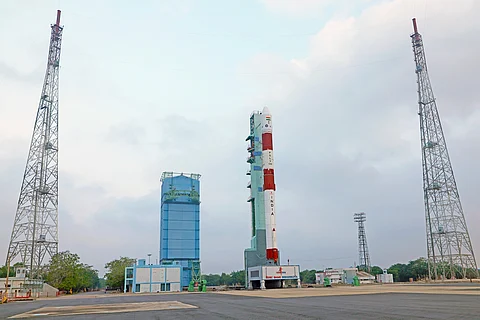

The Indian Space Research Organisation (ISRO) marked the end of the year with the successful launch of its Space Docking Experiment (SpaDeX) mission on December 30, 2024. If successful, this mission will make India the fourth country to demonstrate the complex manoeuvre of docking two spacecraft in orbit.
Docking — the process of connecting two spacecraft without external assistance — is a critical capability for advancing India’s space ambitions. These include plans to send an Indian astronaut to the Moon, conduct sample return missions from it and establish the Bharatiya Antariksh Station by 2035, a project approved by the Cabinet in September 2024.
The SpaDeX mission, which will last two years, aims to demonstrate key technologies for rendezvous, docking and undocking in low-Earth orbit using two 220-kilogramme spacecraft, named SpaDeX A and SpaDeX B. Both spacecraft separated successfully a few minutes after the launch.
ISRO will next attempt to dock the two satellites, orbiting at speeds of 28,800 kilometres per hour, by carefully maneuvering them to reduce their relative velocities to a mere 0.036 kilometre per hour. S Somnath, ISRO chair, speaking to the press after the launch, stated that he hopes to see the docking process commencing in a week.
The mission will also test the transfer of electric power between the docked spacecraft, a feature critical for future applications such as in-space robotics, composite spacecraft control and payload operations after undocking.
Both spacecraft are equipped with payloads to support a range of scientific activities. SpaDeX A features a high-resolution camera, while SpaDeX B carries a miniature multispectral payload and a radiation monitor. These instruments will capture high-resolution images, monitor natural resources, support vegetation studies and measure on-orbit radiation.
The spacecraft were launched aboard ISRO’s Polar Satellite Launch Vehicle (PSLV-C60), often referred to as the agency’s workhorse. PSLV had also launched the XPoSAT (X-ray Polarimeter Satellite) and Proba-3 missions, on January 1, 2024 and December 5, 2024, respectively.
XPoSAT studies the dynamics of bright X-ray sources in extreme cosmic environments, while Proba-3, a European Space Agency mission, demonstrates precision formation flying and studies the Sun’s corona near its rim. A pair of satellites fly together, maintaining a fixed configuration as a ‘large rigid structure’ in space.
The SpaDeX mission’s satellites were designed by ISRO’s UR Rao Satellite Centre (URSC) and integrated at Ananth Technologies, a private aerospace and defence manufacturer based in Bangalore. Mission operations are being managed by the ISRO Telemetry, Tracking and Command Network.
In addition to SpaDeX, the PSLV-C60 launch vehicle carried 24 payloads. Fourteen of them were developed by ISRO and Department of Space centres and primarily focused on validating and enabling technologies and proof-of-concepts as precursor experiments for future missions.
One example is Walking Robotic Arm through inchworm walking from the ISRO Inertial Systems Unit, Thiruvananthapuram, which is responsible for the design and development of inertial systems for launch vehicles and spacecraft programmes of ISRO.
The rest of the payloads were developed by non-government entities, including start-ups and academic institutions. These payloads focus on innovations such as growing plant callus in space, testing green monopropellant thrusters, studying the growth of gut bacteria in microgravity and launching India’s first artificial intelligence laboratory in space.